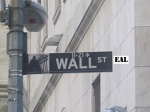My view on how the majority of the world sees Wall Street today.
————————————————————————————-
Sanjay MistryInfo 303
Image-Text Project
10/7/12
In my first project I showed you where I am from. I talked about what aspects come to mind when I do speak about New York. Now I am going to go further into another part of our culture today. For my second “image-text” project I decided to talk about Wall Street. If you are not aware Wall Street is the financial district of New York City that is in lower Manhattan. In addition, it is also the financial markets of the United States and home to the New York Stock Exchange. I understand there is a lot of tough economical time going on right now, but I wanted to show what the majority of people automatically stereotype Wall Street.
One major event that happened almost a year ago on Wall Street was, “Occupy Wall Street.” Protests began in New York City on September 17, 2011. By October 9, similar demonstrations were either ongoing or had been held in 70 other major cities. The movement rejects existing political institutions and attempts to create alternative ones through direct action and direct democracy. Occupy protesters’ slogan, “We are the 99%”, asserts that the “99%” pay for the mistakes of the “1%”. The 99%’s argument was that Wall Street was stealing from the poor and giving to the rich. The Drucker’s reading tells us that odd spelling brings attention to itself which is what I did with my “Wall Steal Sign.” (Drucker 92). My graffiti stencil outlines the world Wall Street with the letters “EAL” below it to show what the 99% thinks of Wall Street is doing, which is stealing from them and not assisting them in this tough economic time.
The audience I picked for my stencil graffiti was everyone who was negatively affected by the economy. Mainly, I referring to the people who lost their jobs or struggling at the moment. Since it has been the anniversary for the 99%, I wanted to give something back that is so big in our generation. This is part of our generation and our kids will be looking back at this moment when the economy almost came down to the Great Depression on Wall Street.
The first thing I wanted to highlight on my stencil graffiti was the period. Wysocki referred “data visualization… brings a scientific or technical tone to text.” (Wysocki 134). I wanted to be the center of the graffiti and correlate and show to be a technical term that Wall Street is the center of the financial world. Secondly, it helps bring a transition into the next phase of my piece. I purposefully put the period there to bring out the “EAL” and connect the two lines diagonally. I wanted my audience to look at the piece and then take a second look at it. I decisively did this so people could stop, think, and then connect the ideas and words related to the background of today’s economic times. Also, with the space I provided, I made Wall Street bigger than “EAL.” The first two lines of the stencil should remind the audience of Wall Street sign they would find in New York.
I designed my image-text very simply. First, I traced what I wanted my cutout to say. Then, I slowly outlined the pencil lines with a knife and slowly popped out each letter. This process took me a long time, however it was worth it after the finished product. Wysocki said that, “…typefaces are a major visual strategy for a text’s composers to signal the genre into which the text is to fit.” (Wysocki 127). I chose this font because it was as close as I could mimic a street sign font in New York. When a person sees a New York City street sign it is pretty distinctive and outgoing. I wanted to show the audience what people were occupying Wall Street. I chose this simple design to bring out how less then 10 letters can bring emotions and hope for our new generation. Moreover, I wanted to remind others about how everyone perceived that the power of the world is controlled by less than 10% of the world. I correlated the numbers of letters and the percent of how the world is controlled. Lastly, the last line of the text brings out the world “EAL” (STEAL). As Drucker puts it, “Language is information. It guides us.” (Drucker 93). When a person sees a verb they automatically thing of what that word is. Majority of the 99% percent believes they were lied, cheated and stolen from. However, my 99% needs to know that this economic turmoil didn’t happen over night, it happened over a long period time and brought forth a catastrophic problem that was resulted in a robbery of ourselves…
Work Cited
- “Income inequality in America The 99 percent.” Economist . n. page. Print. <http://www.economist.com/blogs/dailychart/2011/10/income-inequality-america>.
- Wysocki, Anne Francis. “Ch. 6: The Multiple Media of Texts: How Onscreen and Paper Texts Incorporate Words, Images, and Other Media.” What Writing Does and How It Does It. Bazerman, Charles, and Paul Prior (eds.). Lawrence Erlbaum Associates, 2004. 123-163. Print.
- Drucker, Joanna. Figuring the Word. Granary Books, 1998. 90-99. Print.


